If you have vocational skills, even when you don’t have education, you have a choice. That, for me, is a real takeaway from my life. I really want to help young women who are struggling against poverty.
Pyone Thet Thet Kyaw can be found at the British Embassy, working for the Department for International Development (DFID) in Yangon from 9-5, and leading her own dressmaking start-up, Virya Couture, on 39th Street every evening, juggling two completely different careers but pursuing one dream.
Pyone spans sectors while securing rights for her fellow women and financial stability for her family. As the founder and head designer at Virya Couture, Pyone acts as a leader to women in both private and public sectors. Through her dressmaking shop she teaches vocational skills and employs underprivileged women, helping them overcome poverty in a country rife with change.
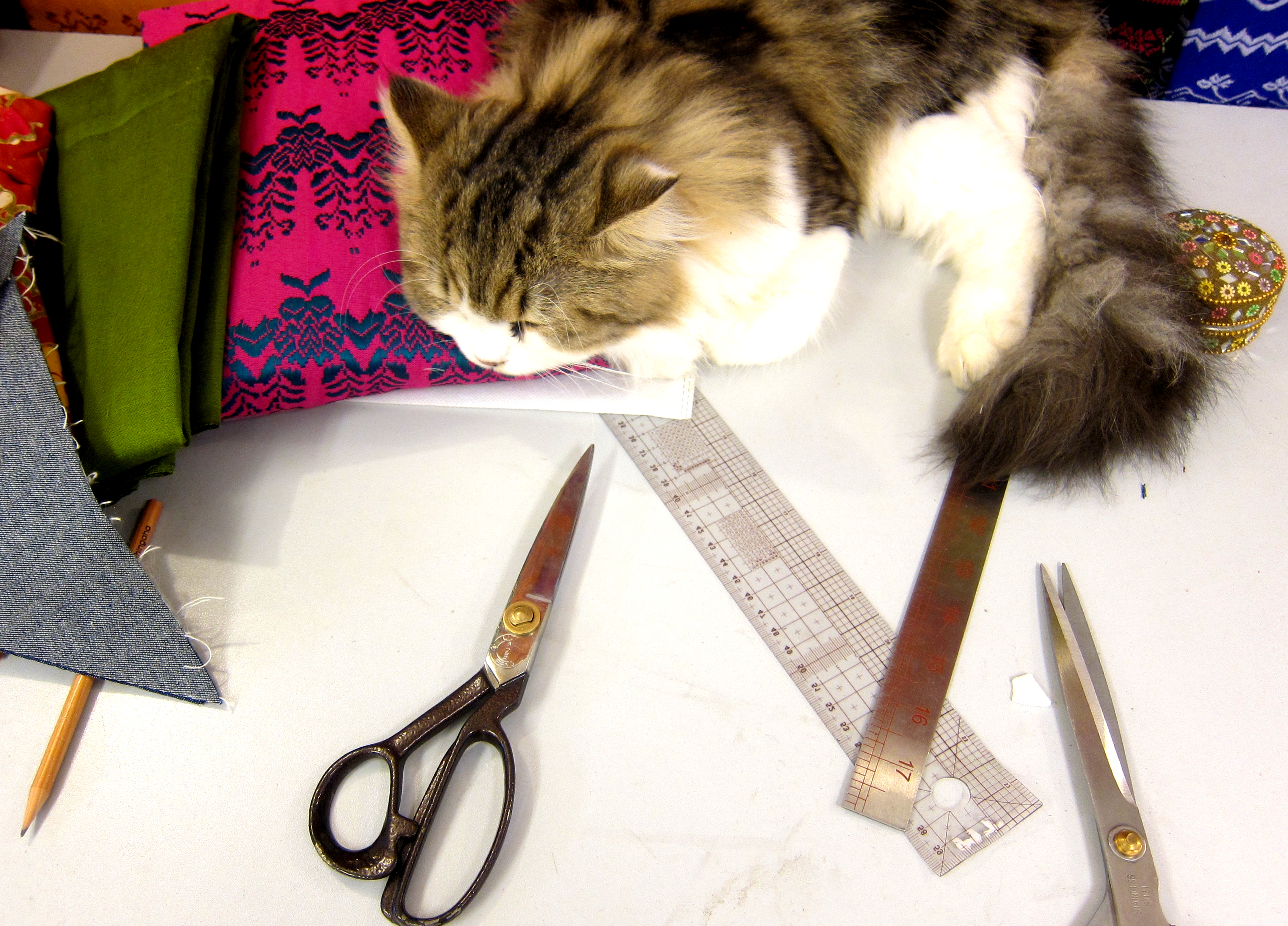
Ethical fashion is all about using locally produced organic fabrics. Pyone’s vision is classy, yet contemporary: reinventing dresses from traditional fabrics representing Myanmar’s diverse ethnicities and cultural regions. The vibrantly coloured fabrics she adores line the shop walls, while her handmade clothes hang in the window. This is what couture now means in Yangon, thanks to the spirit and sensibilities of Pyone’s brand, Virya Couture.
Pyone has been making her own clothes for years. When we first met in 2016, she dreamed of seeing her designs worn by other people. A year later she invited me to her shop, where she’s been running a dressmaking business that was burgeoning by the three-month mark. Not only is her business thriving, but she’s sticking to her guns and promoting the ethics she believes in.
Fashion, like almost everything else, is gendered. The everyday realities of this haven’t escaped Pyone’s attention: “I love traditional style dresses, but the real traditional style is actually limiting the way real women behave.” Wearing traditional dress, Pyone says, makes her feel “timid. You behave more like a proper traditional lady.” But that won’t stop her empowering young women, supporting the local ethical textile businesses across the country, and challenging ideas about women’s fashion in Myanmar.
Almost symbolic of the transparency of their business model, Pyone’s shop opens right onto the busy downtown street from which passers-by will pop in for a chat with Pyone and her growing staff as they work. Pyone spoke to me in January 2017 about style, supporting local industry, and how fashion meets gender in contemporary Myanmar.
Why did you decide to start Virya Couture now?
I describe myself as somebody who always needs to be on the go. Whenever I feel like I have free time I freak out a little bit and start to question things: “am I really productive? What am I doing with my time?” I was doing the DFID job for a few years before I found it a little bit repetitive. I found the work interesting, especially with the elections, but after that I questioned myself. I wondered what I would like to do in the next five to ten years, after the international aid agenda.
All the international aid organisations will eventually leave because our country will develop. The business and politics is already getting better. So I started Virya Couture, which has been what I really wanted to do since I was fourteen, fifteen, sixteen – all my life really.
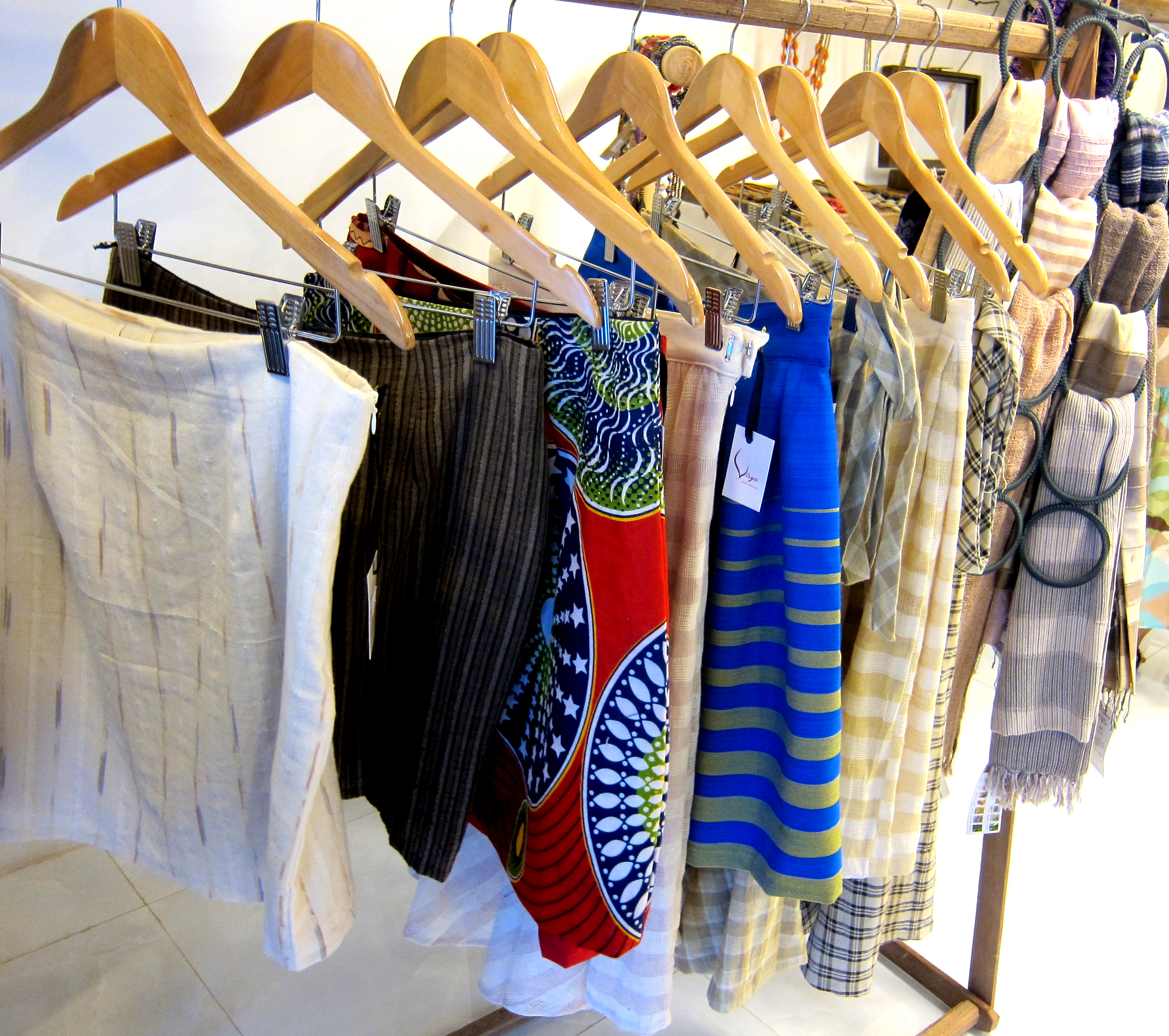
How can Virya Couture improve things for people in Myanmar?
The business is about the promotion of ethical fashion in Myanmar, at a very start-up level. There is a boom in the fashion industry here, which means there is a big risk of exploitation. There is a huge need for local organisations working for being ethical in the fashion industry. This is where we come in, not only in sourcing ethical fabrics and materials, but also training young women from disadvantaged backgrounds who really want to come into this field.
The skills that I got from my grandmother when I was young are very useful. My parents don’t come from well-off families, we [my parents and I] were not well-off, so I had to earn my own pocket money. Having sewing skills and a talent for dressmaking really helped me. Having vocational skills means you don’t have to rely on other people and you don’t risk getting into more dangerous professions. If young women don’t have money, they don’t have much choice and often end up as sex workers.
If you have vocational skills, even when you don’t have education, you have a choice. That, for me, is a real takeaway from my life. I really want to help young women who are struggling against poverty.
I love traditional style dresses, but the real traditional style is actually limiting the way real women behave. You can’t actually bend fully, and you have to act really feminine.
How do you choose the fabrics you wear and work with?
My favourite thing to wear is organically dyed fabric or something locally made. Whenever I travel, I look for local suppliers and local fabric. Local fabrics inspire to me, because and you know that the profits actually go to the local communities who made them. In Myanmar specifically, I tend to look for fabrics made by local women. It is always a good sign that it is directly profiting them if you see them weaving.
I have to say I like Rakhine fabrics best. Historically, there were all these Rakhine fabrics that were considered outdated, and no-one wanted to wear them. The patterns were beautiful, but the materials they used were not very good. Even Rakhine people did not wear them for some time. But with the booming fabrics industry here, it is really coming to life. Now the fabrics are very vibrant, full of symbols, meaning and cultural identity. I am half Rakhine, so I am a little bit biased. I also like Kachin fabric. It is quality cotton, the patterns are really lovely, and the ethnic sense is strong in Kachin.
I really like the dynamic, vibrant fabrics made in the ethnic regions. They are full of meanings and symbols. Each fabric has meaning tied to cultural identity and the region they live. The colours are really lovely. We turn them into classy, modern dresses. I love them.
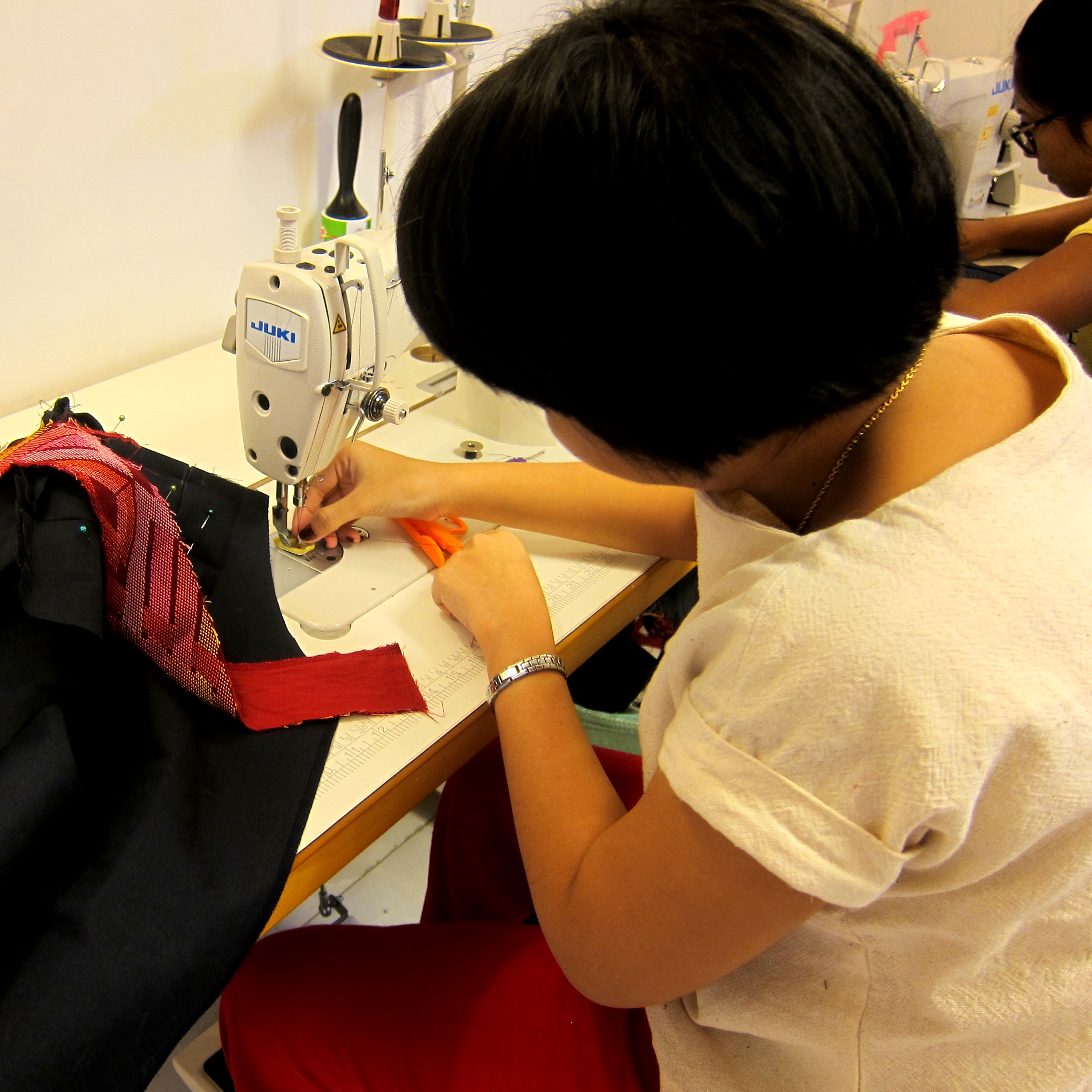
How do you handle running Virya Couture while working for DFID?
At this stage it is manageable. We don’t want to do a lot of orders, just enough to get the business going. We’re not making a huge profit, but we’re not losing money. We’re making enough to run the shop and pay the staff sufficient salary.
We only have a small team – myself and three colleagues, and someone who will come in on Friday and Saturday. We have three machines. It is very basic, so we can’t really handle a lot of orders. [Pyone laughs] I’m not in it for the money!
I tend to work on designs and patterns in the evenings, so things are ready for the team to complete the next day. I work half days on Fridays and I’m in the shop at the weekends too. To be honest, the only way I can do both and keep a clear head is by leaving my mobile phone downstairs in the shop when I go up to bed at night. Otherwise I’d never sleep!
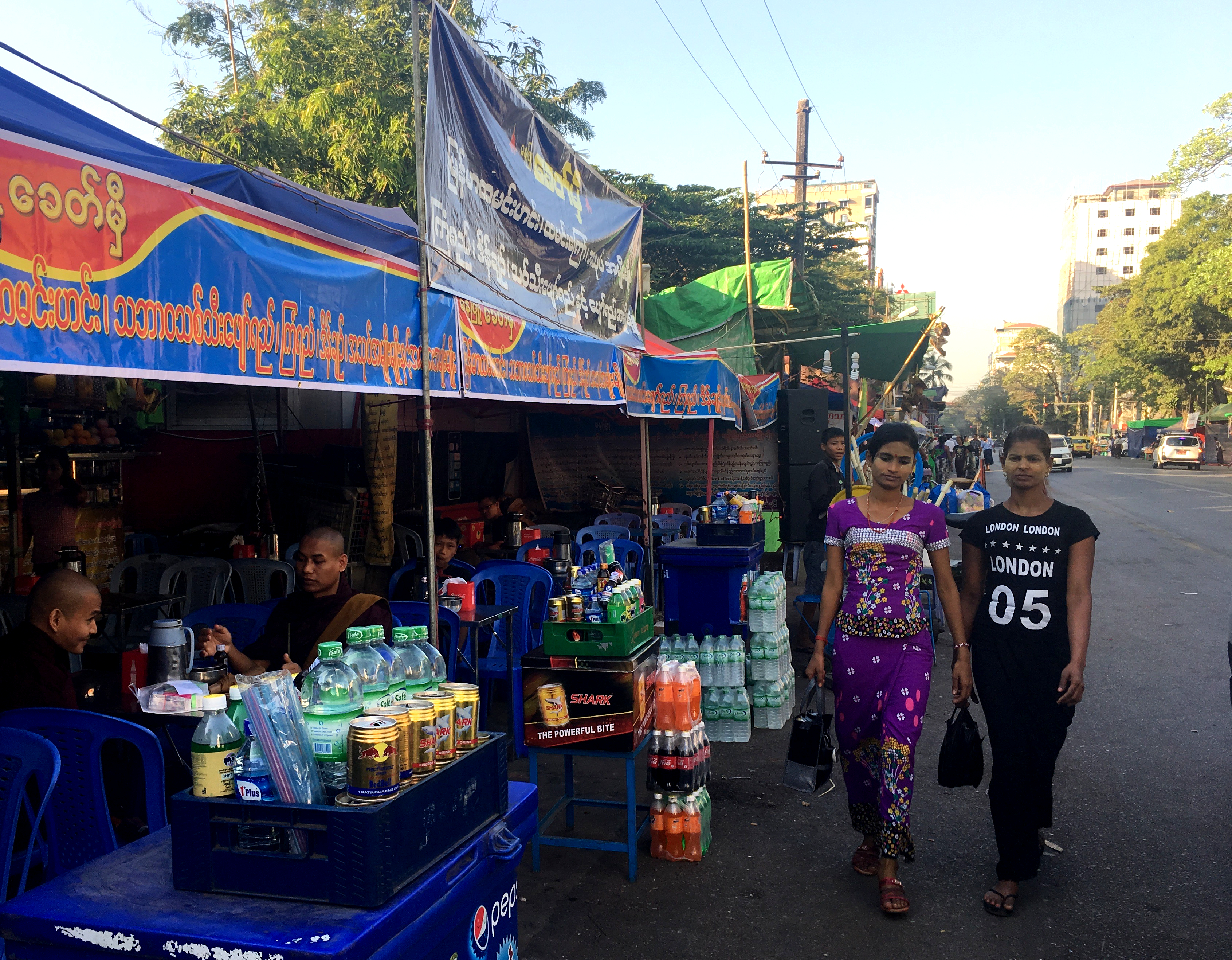
How does clothing compound gender norms in Myanmar? Do you think traditional Longyis influence the way women are seen?
I would say that Longyis are actually good for the weather. They are quite airy, and it really suits the hot weather in Myanmar. I think that is how this style developed: the longyi for men and the longyi for women are both quite free and flowing. But in terms of the top, women’s tops tend to be a bit tighter.
Traditionally, it is supposed to be short – it should come in just under the waist. Both the tightness and the length, make you feel… awkward. And traditionally, it is not appropriate to show the skin around your belly or waist. Although in the fifties, very thin, see-through fabrics were popular. During that period it was common to see a woman’s bra through her shirt. That was seen okay during the forties and fifties. But now, it is not okay to show that skin.
In contemporary fashion, the skirt is quite tight around the bum, thighs, and hips. The normal Burmese women’s longyi is not supposed to be tight around there. It is mainly the top that is tight and restricting.
In terms of the way women behave, that top limits the way women move, and behave, and act. I feel conflicted. Yes, I love traditional style dresses, but the real traditional style is actually limiting the way real women behave. You can’t actually bend fully, and you have to act really feminine.
Read on
Pyone Thet Thet Kyaw on Developing her own Fashion Brand in Burma (Interview: part 2)

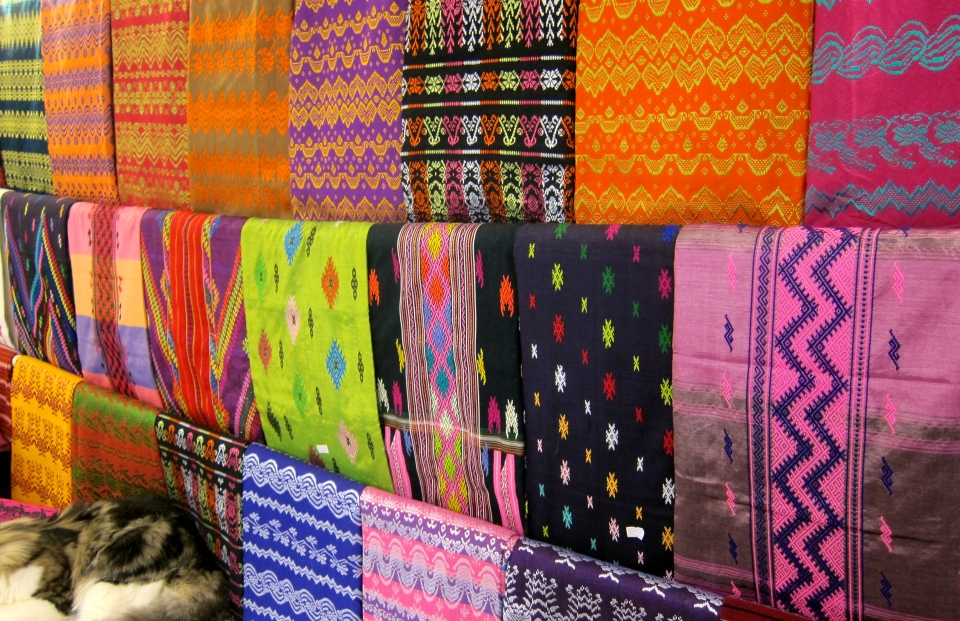
I want to buy longyi